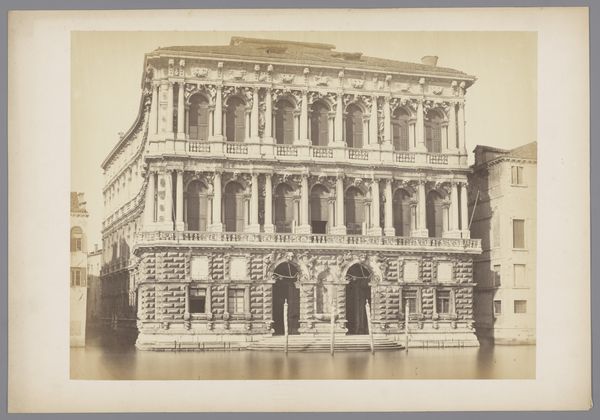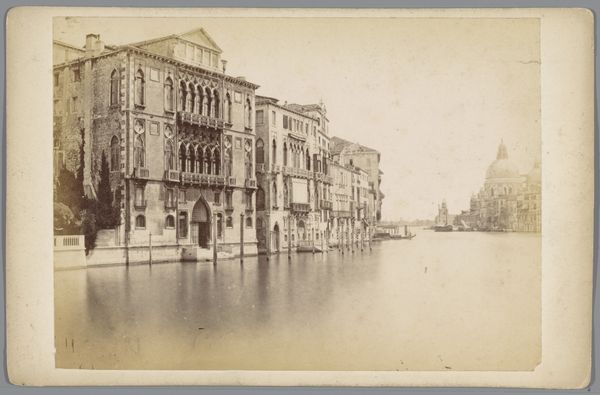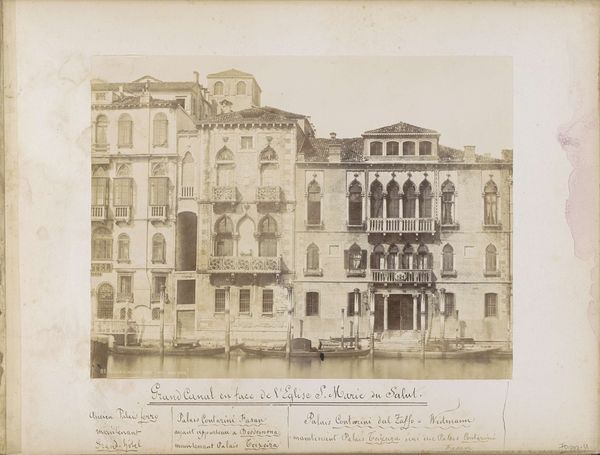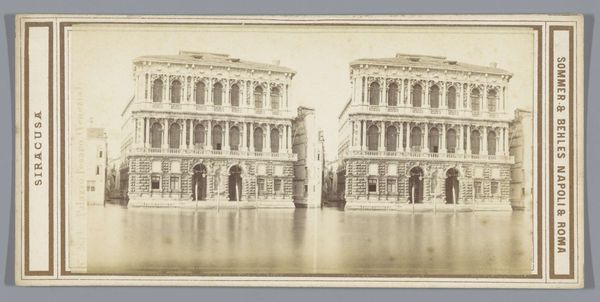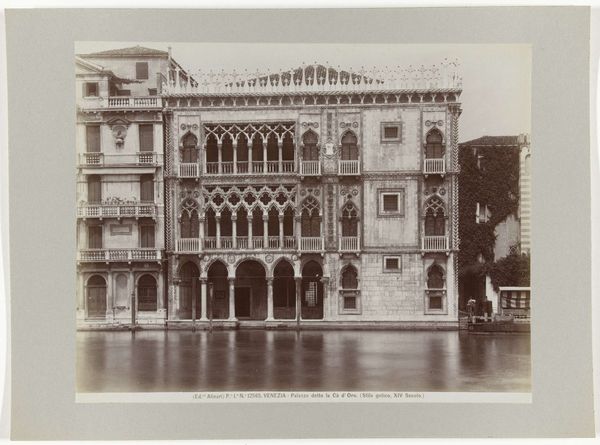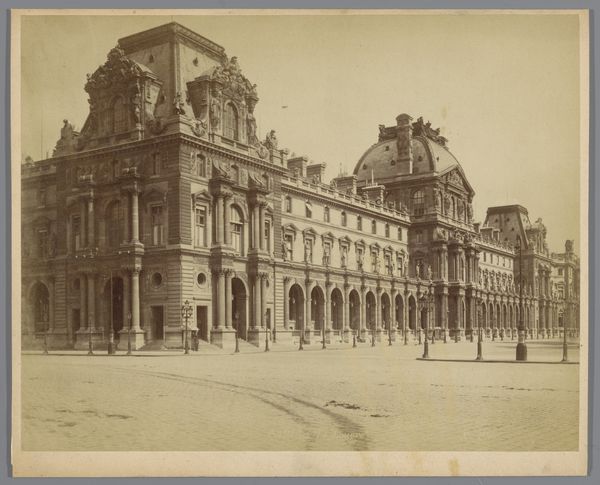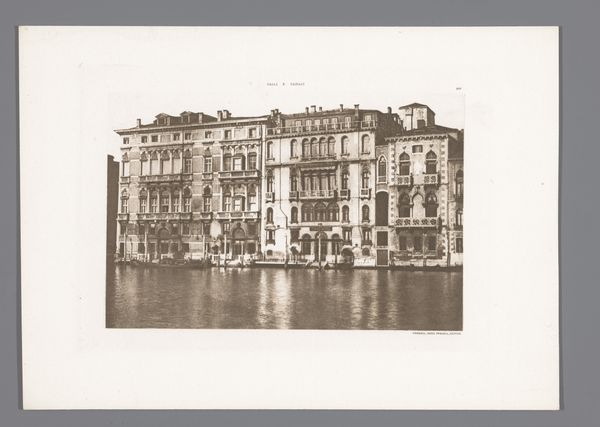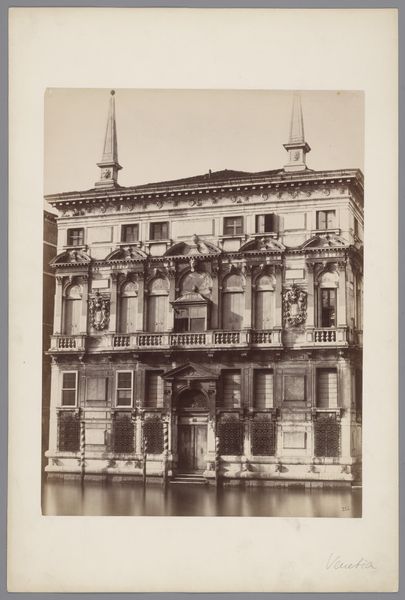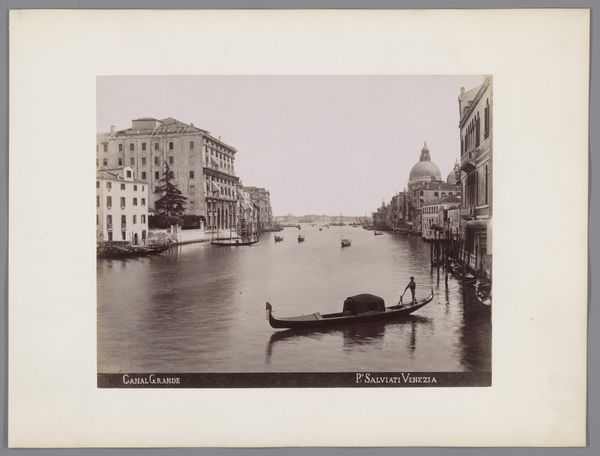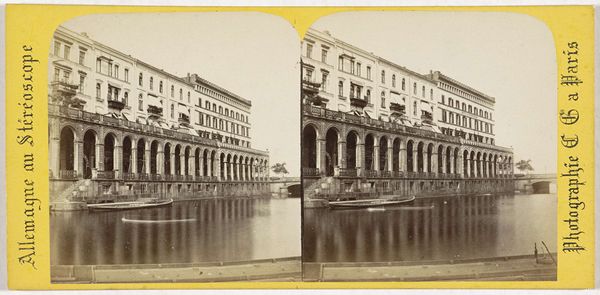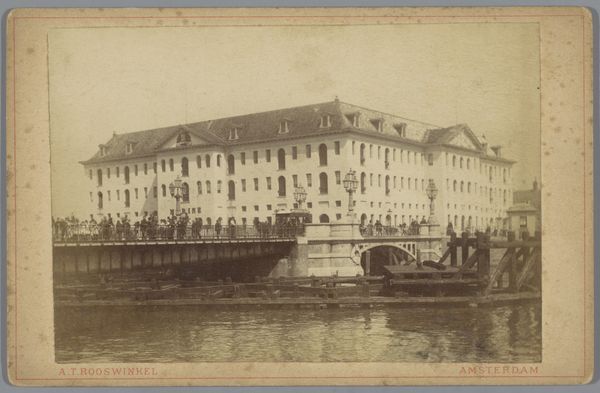
Dimensions: height 320 mm, width 480 mm
Copyright: Rijks Museum: Open Domain
Editor: So, this albumen print, "Exterieur van het Ca' Pesaro te Venetië, Italië" by Carlo Ponti, made sometime between 1852 and 1893… it's a striking architectural shot. There's something so still and stately about it. What catches your eye most when you look at this image? Curator: Well, considering Ponti’s placement in Venice’s history, and photography's, I am curious: How do you think the rise of photography impacted Venetian painting, specifically the tradition of cityscape views, the *vedute*? Editor: That’s interesting. I suppose it offered a new kind of accuracy, almost a documentary feel… competing directly with painters like Canaletto? Curator: Precisely! The established art world faced new competition, democratizing image production. But think about the market – who was buying these images? Tourists, mostly? How did Ponti's photography contribute to Venice's image as a desirable destination? Editor: Okay, so he’s not just recording Venice; he's selling an idea of Venice to a growing tourist market, constructing a kind of... brand? And this romantic, historical Venice then starts overshadowing its contemporary reality? Curator: Exactly! Think about how photography, like this one, helped standardize that iconic imagery. Also, notice how the water almost mirrors the buildings; how might Ponti's aesthetic choices reinforce a specific kind of interpretation or expectation for viewers in, say, London or Paris at the time? Editor: That's fascinating; it reframes how I look at something that initially just seemed like a record of a place. Thank you for highlighting that shift. Curator: Indeed, thinking about images as cultural commodities can teach us how deeply they shape perception! It certainly makes me think twice!
Comments
No comments
Be the first to comment and join the conversation on the ultimate creative platform.


